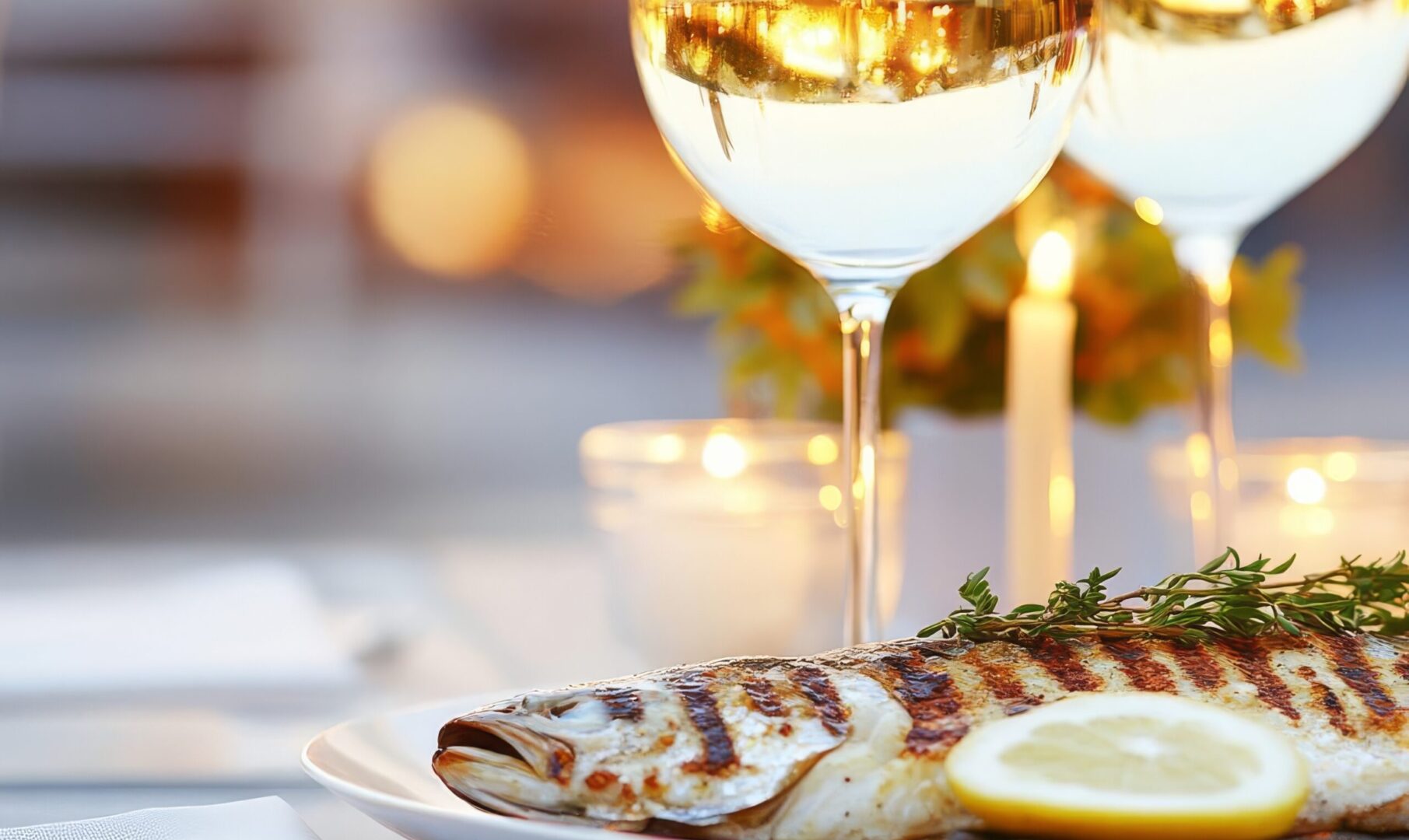Have you heard the phrase: “if it grows together, it goes together”? Follow this rule and apparently, you’ll have close to an 80% success rating with most pairings. Great wine expresses the characteristics of its region just like the food itself meaning a greater chance of a harmonious pairing.
Boost the flavour profiles of your next dinner party menu by making sure you get the pairings right. And by pairings, I don’t mean who is teaming up with who in the murder mystery, but rather what wine will create the better dining experience.
After speaking to several sommelier’s, they all agreed that it is wise to pair red wines with bold-flavoured red meats, and to match white wines with light-intensity meats such as fish or chicken. Bitter wines, like red wines, are best balanced with fat, and did you know that it is better to match the wine with the sauce rather than the meat? Finally, desserts want more dessert.
More often than not, white, sparkling, and rosé wines create complementary pairings and red wines create congruent pairings. What does this mean?
A complementary pairing creates balance through complementary tastes and flavours. A congruent pairing creates balance by amplifying shared flavour compounds.
When pairing food with wine, think of these six basic tastes: salt, acid, sweet, bitter, fat, spice.
For the most part, wine lacks the three tastes of saltiness, fattiness, and spiciness, but it does contain acidity, sweetness, and bitterness to varying degrees. Red wines tend to have more bitterness. White, rosé, and sparkling wines have more acidity. Sweet wines have more sweetness.
Now simplify a dish down to its basic dominant tastes. Is it light or rich? A green salad with a vinaigrette dressing is bitter and acidic. A truffle mushroom pasta with butter and cheese is creamy and salty.
Is the wine light or bold? Sauvignon Blanc is light-bodied, but it has higher acidity. Chardonnay has more body but is usually not too acidic. Pinot Noir is lighter bodied (for a red wine), and it doesn’t have too much bitterness. Cabernet Sauvignon is more full-bodied and has high tannin (more bitterness).
Has anyone ever recommended a Cab with your house salad? Hopefully not! This big bold red will only amplify the bitterness of the food. Pour a tart, zingy Sauvignon Blanc instead.
For a creamy pasta, a zesty white wine with high acidity will complement the fat such as a Pinot Grigio or Sauvignon Blanc. A white wine with creaminess like a Chardonnay would create a congruent pairing.
To get you on your way, here is a list of some of the most popular food and wine pairings, especially if you are now looking at your dinner party menu and wondering where to start:
- Apple tart and sweet Chenin Blanc
- Caviar and Champagne
- Lamb cutlets with Rioja red made from Tempranillo grapes
- Chinese food and Bordeaux Rosé; its bright, sweet berry fruit, handles the combination of sweet and sour particularly well
- Steak with any medium-to full-bodied red such as a Californian Cabernet Sauvignon, Australian Shiraz or an Argentinian Malbec
- Crab and Australian Riesling; adds vibrant zest to the dish without overwhelming the meat
- Nicoise salad and dry Rosé
- Scallops and oaked Chardonnay
- Goats cheese and Sauvignon Blanc
- Thai food and Pinot Gris
While drinking any wine with a dish won’t ruin a beautiful meal, choosing the right wine can really enhance it.
We’re only rippling the surface here, so to learn more, book a spot at our upcoming The Art of Food with Wineevent at The Brasserie starting at 5:30pm on Thursday 13 February. There’s free entry for Purveyors Wine Club members, and CI$ 65 per person (plus grats) for non-members.
To reserve, email us at reservations@brasseriecayman.com or call +1 345 945 1815.

